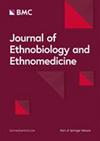Tracing gender variation in traditional knowledge: participatory tools to promote conservation in a Quilombola community in Brazil
IF 3.7
2区 医学
Q1 BIODIVERSITY CONSERVATION
引用次数: 0
Abstract
Based on participatory research tools and analysis with a gender focus, we aim to identify the knowledge associated with native plants of the Atlantic Forest in one Quilombola community whose territory is juxtaposed with a protected area, in South Brazil. Through the perception of the residents of the Quilombola community of São Roque, we classified the availability, harvesting intensity, abundance, and importance of fourteen plants native to the Atlantic Forest found in their territory. These fourteen plants were selected after initial interviews with a free listing of plants done with all adults (44 people), followed by plant collection and identification. A participatory workshop was built with the community to collect data through three activities: four-cell tool, environment matrix, and importance matrix. To identify the gender nuances in the knowledge within this community, all activities were separated into two groups based on the gender of the 22 participants (9 women and 13 men) and the researchers. The species Pau-pra-tudo (Picrasma crenata), Quina (Coutarea hexandra), and Cipó-milome (Aristolochia triangularis) were similarly classified as important by both groups, which indicates the cultural and environmental relevance associated with them regardless of gender. The perceptions of other species were expressed differently between the groups, showing the variance of the ecological knowledge and the relationship between the sociocultural contexts of gender and the knowledge manifested. The final part of the workshop was a lecture given by two community experts about herbal medicines based on forest species found in the territory. Based on the multiple forms of results recorded in the workshop, we discuss the demand for inclusion of the traditional community in land management plans of environmental agencies, highlighting how individual characteristics, such as gender, can fill gaps in data about local biodiversity.追踪传统知识中的性别差异:促进巴西前逃亡黑奴社区保护工作的参与式工具
基于以性别为重点的参与式研究工具和分析,我们旨在确定巴西南部一个与保护区毗邻的前逃亡黑奴社区中与大西洋森林原生植物相关的知识。通过圣罗克前逃亡黑奴社区居民的感知,我们对其领地内发现的 14 种大西洋森林原生植物的可用性、采伐强度、丰度和重要性进行了分类。这 14 种植物是在对所有成年人(44 人)进行自由植物列表的初步访谈后选出的,随后进行了植物采集和鉴定。与社区共同建立了一个参与式研讨会,通过三项活动收集数据:四格工具、环境矩阵和重要性矩阵。为了识别该社区知识中的性别差异,所有活动都根据 22 名参与者(9 名女性和 13 名男性)和研究人员的性别分为两组。Pau-pra-tudo (Picrasma crenata)、Quina (Coutarea hexandra)和 Cipó-milome (Aristolochia triangularis)这三个物种在两个群体中的重要程度相差无几,这表明与这些物种相关的文化和环境意义不分性别。两组对其他物种的认识则有所不同,这表明了生态知识的差异以及性别社会文化背景与知识表现之间的关系。研讨会的最后一部分是由两位社区专家就基于当地森林物种的草药进行讲座。根据研讨会记录的多种形式的成果,我们讨论了将传统社区纳入环境机构土地管理计划的要求,强调了性别等个体特征如何填补当地生物多样性数据的空白。
本文章由计算机程序翻译,如有差异,请以英文原文为准。
求助全文
约1分钟内获得全文
求助全文
来源期刊

Journal of Ethnobiology and Ethnomedicine
PHARMACOLOGY & PHARMACY-
CiteScore
7.30
自引率
16.70%
发文量
66
审稿时长
>12 weeks
期刊介绍:
Journal of Ethnobiology and Ethnomedicine publishes original research focusing on cultural perceptions of nature and of human and animal health. Journal of Ethnobiology and Ethnomedicine invites research articles, reviews and commentaries concerning the investigations of the inextricable links between human societies and nature, food, and health. Specifically, the journal covers the following topics: ethnobotany, ethnomycology, ethnozoology, ethnoecology (including ethnopedology), ethnogastronomy, ethnomedicine, ethnoveterinary, as well as all related areas in environmental, nutritional, and medical anthropology.
Research focusing on the implications that the inclusion of humanistic, cultural, and social dimensions have in understanding the biological word is also welcome, as well as its potential projections in public health-centred, nutritional, and environmental policies.
 求助内容:
求助内容: 应助结果提醒方式:
应助结果提醒方式:


